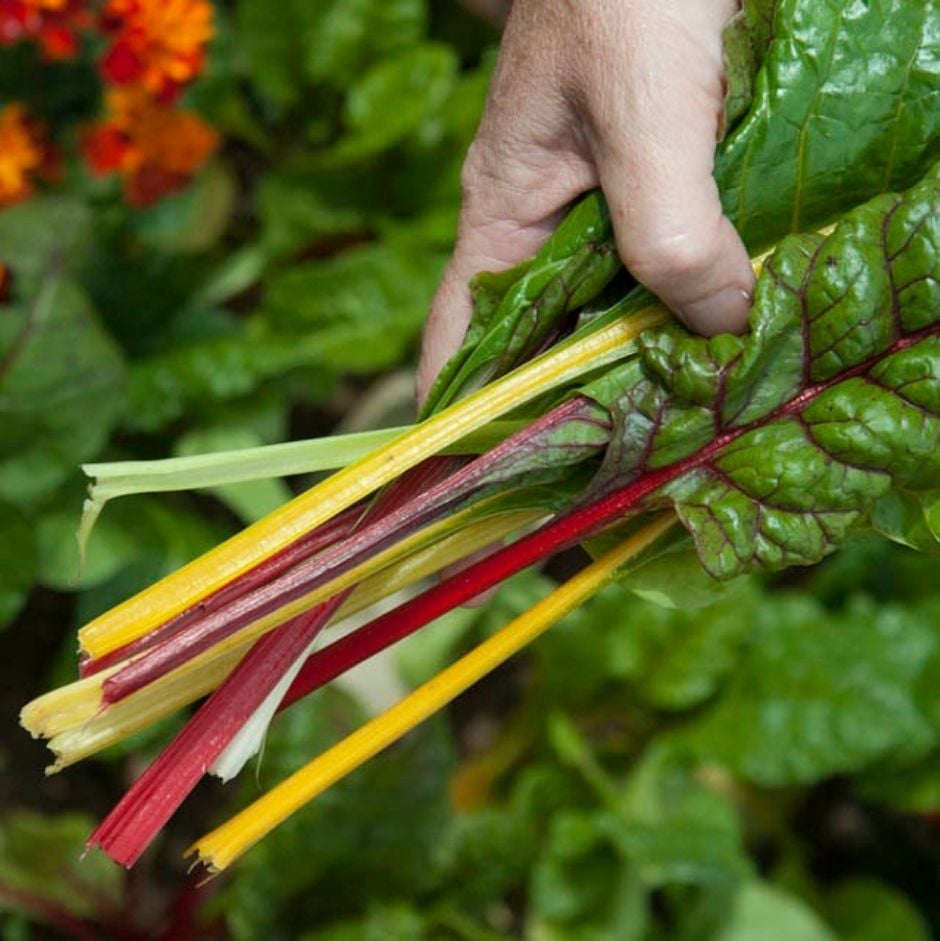Month by month guide to food growing: autumn term
Autumn is a busy time in an edible garden with lots to harvest. Use this guide and the links to different crop sheets to help plan your growing.

Learning objectives:
- Identify seasonal crops that can be sown, planted, and harvested during autumn and winter
- Understand how to prepare and maintain soil for successful plant growth in colder months
- Learn how to protect crops from frost and other environmental challenges
Curriculum links:
- Science: Supports understanding of plant life cycles, growth conditions, and seasonality
- Geography: Encourages learning about climates, weather patterns, and sustainable food production
Key vocabulary
September
Sow and plant:
- Lettuce (winter)
- Onions (sets)
- Radishes
- Salad leaves
- Spinach
- Strawberries (runners)
Harvest:
- Carrots
- Chard
- French beans
- Garlic
- Leeks
- Lettuce
- Onions
- Potatoes (main crop)
- Pumpkins
- Radish
- Raspberries
- Spinach
- Squash
- Tomatoes
Other jobs:
- Prepare the soil for planting
- Add compost or soil improver
- Mulch bare soil or try soing green manures
- Protect crops from frosts
- Order straberry runners
October
Sow and plant:
- Broad beans
- Garlic (cloves)
- Lettuce (winter)
- Onions (sets)
- Peas
- Strawberries (runners)
Harvest:
- Chard
- French beans
- Leeks
- Lettuce
- Garlic
- Potatoes (main crop)
- Pumpkin
- Raspberries
- Spinach
- Squash
- Tomatoes
Other jobs:
- Prepare the soil for planting
- Add compost or soil improver
- Mulch bare soil or try soing green manures
- Protect crops from frosts
- Order straberry runners
November
Sow and plant:
- Broad beans
- Fruit trees and bushes
- Garlic (cloves)
- Raspberries (canes)
Harvest:
- Carrots
- Leeks
- Lettuce
- Spinach
Other jobs:
- Dig the soil if weather conditions allow
- Collect leaves to make leaf compost
- Cut autumn raspberry canes to ground level
December
Sow and plant:
- Fruit trees and bushes
- Cress, microgreens and mustard (indoors)
Harvest:
- Chard
- Leeks
- Lettuce
Other jobs:
- Dig the soil if weather conditions allow
- Collect leaves to make leaf compost
- Cut autumn raspberry canes to ground level
Jargon buster
Many edible plants are typically grown from seed but some are usually grown from baby plants, often because growing them from seed takes a long time or is unreliable. There are different names for different types, for example:
- Onions can be grown from miniature onions known as sets. These mature faster and are less prone to disease
- Strawberry plants produce runners that grow out across the soil and create new plants at the end of them
- Garlic is generally supplied in large bulbs made up of many cloves. Each individual clove can be planted to produce a new plant
- Raspberry plants are often supplied as canes, which are dormant plants with long, woody stems (hence the name)
- Potatoes are grown from miniature potatoes known as seed potatoes and are generally split into three groups: first earlies, second earlies and main crop (depending on when you harvest them)